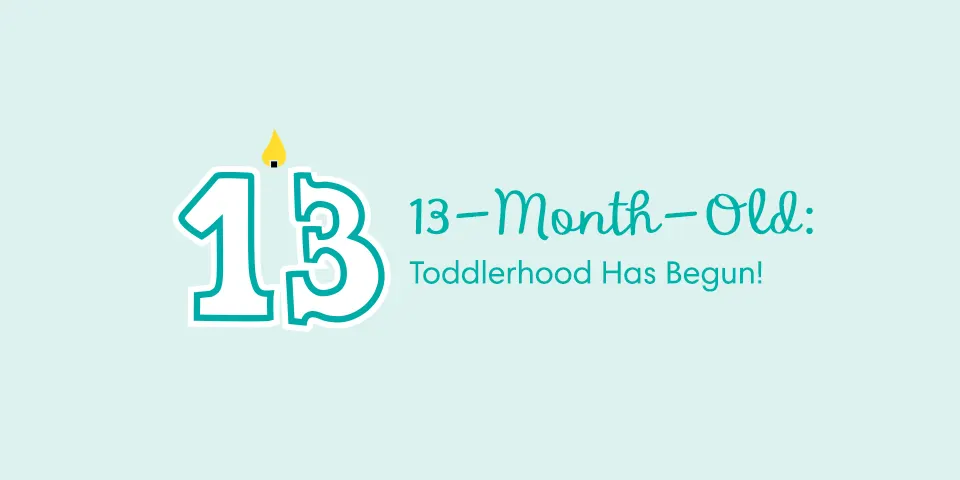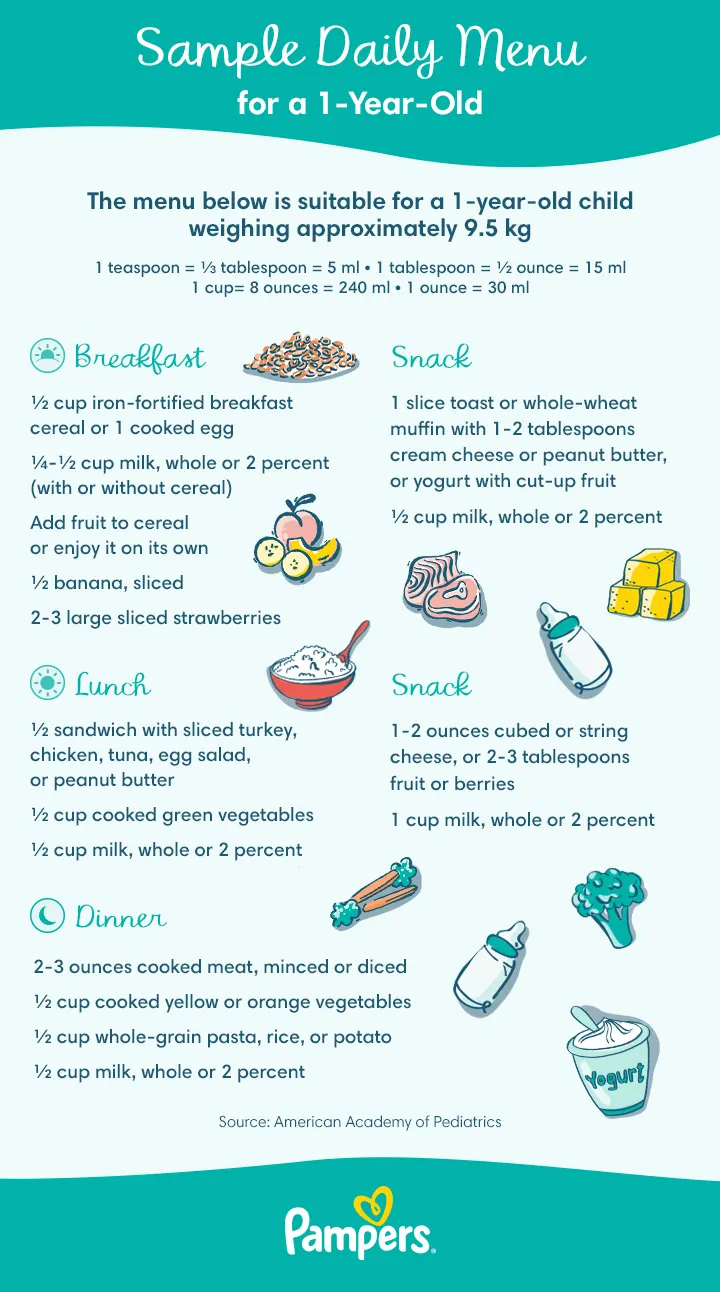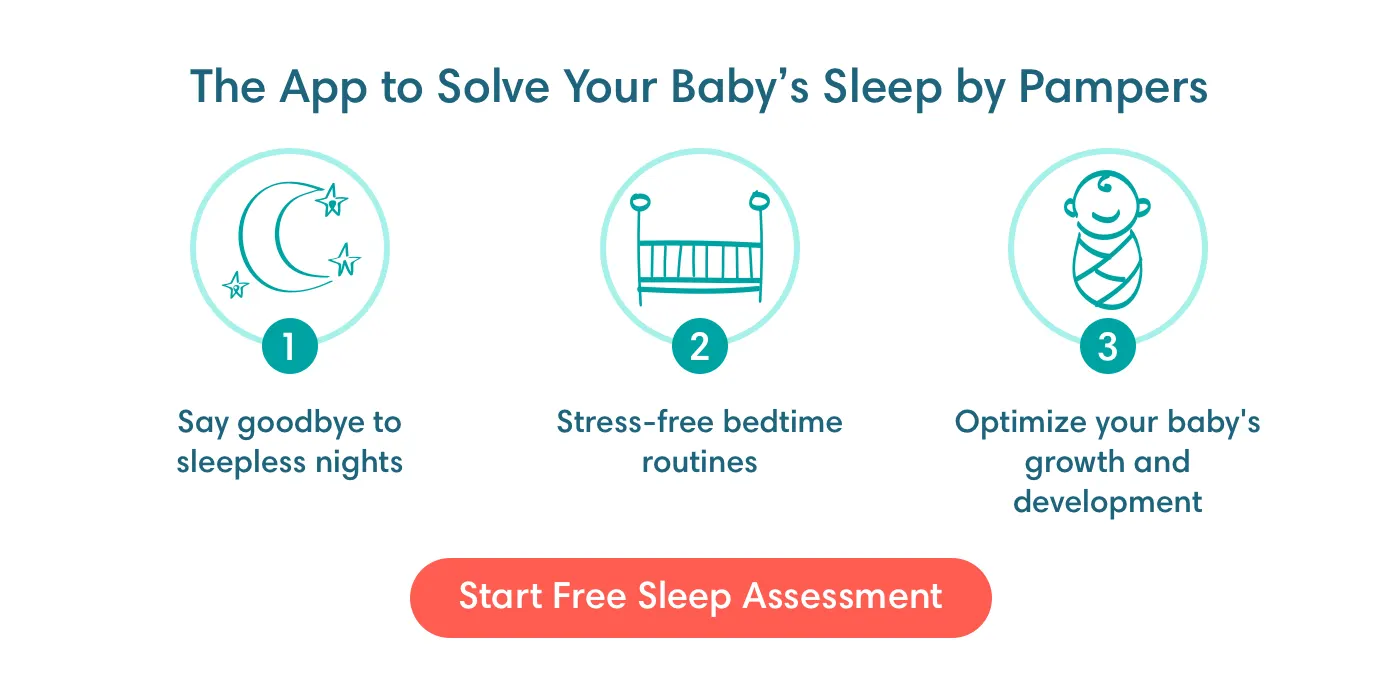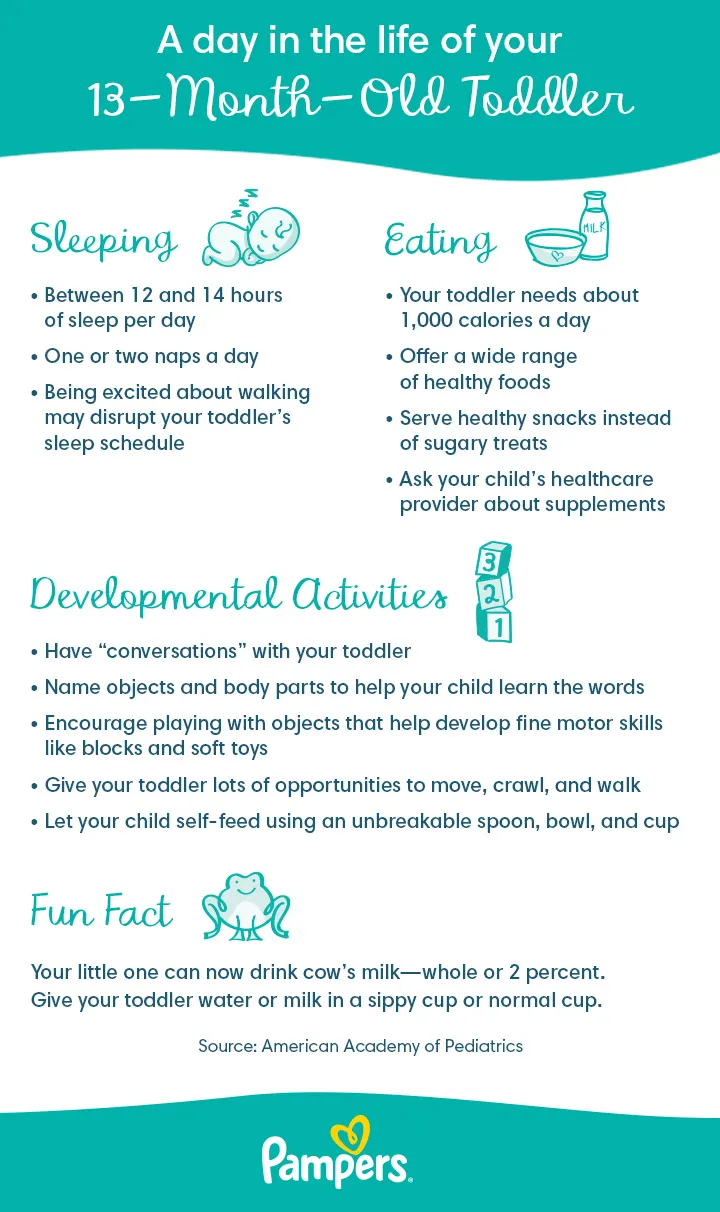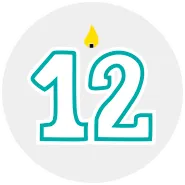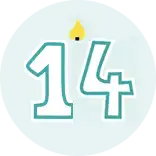13-Month-Old Baby: Entering Toddlerhood
At 13 months, your baby officially enters toddlerhood! This transition comes with many exciting changes, such as crawling, cruising, or even taking first steps. These 13-month-old milestones welcome a new stage of testing physical boundaries, expressing emotions, and growing in independence. Learn more about your baby’s development at 13-months-old, including eating schedules, sleep regression, and much more.
13-Month-Old Baby-to-Toddler Development Milestones
Every toddler is unique, developing in their own way on an individual timeline, so these 13-month milestones aren’t set in stone. Although the following development milestones are typical for a 13-month-old baby entering toddlerhood, you might see them a little earlier or later:
Decreased physical growth. Compared to the rapid growth of the first 12 months, your little one’s physical growth may now start to slow. Your toddler will probably put on only about three to five pounds in the coming year, and your baby’s healthcare provider will continue to track that development on growth charts at regular checkups.
Toddling. As the name “toddler” suggests, your little one will likely start toddling soon, if they haven't already taken those first few steps. Learning to walk doesn't happen all at once, so be prepared for lots of stops, starts, and stumbles. Even things like a change in surface or directions may cause a loss of balance and falling to the ground. In time, your 13-month-old baby will become more skilled and confident. It usually takes a month or two to go from those tentative early steps to standing and moving independently without your support.
New capabilities. Each child develops at their own pace, but you may see some of the following capabilities emerge now or in the next few months:
Say a few simple words like “mama” and “dada”
Recognize common words like “cup”
Recognize familiar people
React to sounds by turning and looking to see where they came from
Be able to act on simple instructions (for example, if you ask your child to point to their favourite toy, they may be able to do so successfully)
Enjoy banging objects together to make a noise
Do certain things to watch you react in a certain way—such as dropping a sippy cup so that you’ll pick it up
Pick up large objects using the pincer grasp (thumb and forefinger).
Illnesses. Catching a cold or flu is common for babies, and that won’t necessarily slow down for your toddler. The most important thing to monitor is your little one’s temperature. For a 13-month-old baby, any temperature over 38 degrees Celsius indicates a fever, but if the temperature reading is 39 degrees Celsius or higher, contact your baby’s healthcare provider right away.
Teething. Your new toddler will continue their teething journey, as they are roughly halfway through developing all their baby teeth. Remember no two children are exactly the same, so your 13-month-old might already have most of their baby teeth or may develop them at a slower pace.
How to Support Your 13-Month-Old’s Development Milestones
Watching your 13-month-old baby enter the world of toddlerhood is exciting! There are many things you can do with a 13-month-old to help support their development:
Read together every day. Spending a few minutes reading to your little one—whether at bedtime or earlier in the day—can be a cherished part of your family life as well as a great learning opportunity. As you look at the pictures together, name the story’s objects or animals and help your child turn the page.
Choose toys that help foster hand-eye coordination and fine motor skills. Give your 13-month-old things like big blocks and soft toys during play time. Your toddler will enjoy improving their picking-up skills using the pincer grasp and holding onto them.
Have conversations with your little one. Your 13-month-old may not talk much yet, but that doesn’t mean you can’t have “conversations” that aid in language development. Diaper changes, bath time, strolls in the park, and drives can be great opportunities to "narrate your day," talking with your little one about what you’re doing and what’s happening in the world around them.
Wean off the bottle (if you haven't already). If your child still uses a bottle, now is a good time to start the transition to a sippy cup. Experts recommend completing the switch from bottle to cup by 18 months. A good way to complete this transition is by gradually removing the midday bottle, then the morning and afternoon one, and finally the bedtime bottle.
13-Month-Old Eating: Meal Ideas for a Changing Feeding Schedule
Your child is probably still getting the hang of self-feeding—either with a spoon or fingers—and drinking from a cup. Mealtime messes and spills are part of the learning process, and, sometimes, part of the fun for your toddler. Therefore, your 13-month-old’s eating schedule will probably be a new adventure each day! To help you along the way, here are a few important things to keep in mind:
Your 13-month-old’s feeding schedule will change. You may notice that your child seems to be less hungry than before. Though growth rates, metabolism, and activity levels vary from child to child, 13-month-olds only need about 1,000 calories a day—a big change from the baby months.
Small meals and snacks are ideal. Your 13-month-old baby will probably prefer an eating schedule that differs from when they were a newborn. At this transition stage, kids usually eat three small meals and two snacks per day. But you won’t need as much food as you may think—even just 16 to 24 ounces of whole milk could account for 300 to 450 of those daily calories.
Things can change day to day. As your 13-month-old starts to enjoy new foods and get used to a new eating schedule, you may notice that their preferences change daily. This is completely normal! Your hungry toddler may consume those 1,000 calories one day but eat much more or less the following day. They may want a huge breakfast but then not be hungry the rest of the day or gobble up a favourite food and then reject that same food a few days later.
As you transition into toddlerhood and the world of new foods, the best advice is to simply go with the flow. Try offering a variety of nutritious foods from the main food groups:
proteins like meat and eggs
dairy products like milk, yogurt, and cheese
fruits
vegetables
whole grain foods such as cereals, pasta, and breads.
Don’t stress about achieving a balanced meal at every sitting, but, rather, aim for various nutrients over the course of a few days.
Meal Ideas for a 13-Month-Old
With your toddler experiencing a new and exciting world of eating, take a look at this sample daily menu for some meal ideas for a hungry 13-month-old:
Introducing Cow’s Milk
Now that your little one is 13 months old, cow’s milk can be a regular part of their diet. You can offer 16 to 24 ounces of either whole or 2 percent milk. To help with the transition from bottle to cup, give the milk in a sippy cup rather than a bottle. With cow’s milk now on the menu (as well as a greater range of solid foods) you might notice changes in your baby’s poop. This is normal, but if your little one gets diarrhea or becomes constipated, or you’re worried about the contents of their diapers for any reason at all, contact your toddler’s healthcare provider.
13-Month-Old Sleep Regression and Sleep Schedules
In total, your 13-month-old probably needs about 12 to 14 hours of sleep a day as their sleep schedule will start to shift. Most sleep will happen at night, but your little one may still need two daytime naps. However, around half of all toddlers are down to one nap a day by 15 months, so yours may not need both. The transition to a single nap will probably happen gradually over the coming months. (You might find that the morning nap will be the first nap to go.) However, remember that there’s no one-size-fits-all when it comes to your 13-month-old’s sleep schedule. Experts recommend watching your little one for signs of tiredness—like moodiness—and adjusting their sleep schedule as needed.
Remember that changes to sleep can cause your 13-month-old to experience sleep regression or keep waking up crying in the night. These are normal reactions to a changing schedule and growing body but contact your child’s healthcare provider with any questions or concerns.
A Day in the Life of Your Toddler
Now that you have a toddler on your hands, here’s a look at what a day in your home might look like:
Your Toddler’s Health: Establishing a Healthy Lifestyle Early
As your toddler starts to eat a greater variety of foods, sleep a little differently, and exert a little more control over their activities and choices, it’s a great idea to establish healthy habits. Here are just some of the ways you can start to do this, even now:
Give your little one lots of opportunities to move, whether it’s crawling, cruising, or walking
Follow your child's cues that they’re full and don’t force them to eat when not hungry
Instead of sugary snacks, give your toddler healthy snacks like fruit, wholegrain crackers, vegetables, and low-fat dairy foods
Avoid screen time and digital media until your child is at least 18 to 24 months old
Set a good example by eating healthy foods yourself and staying physically active
Avoid using food as a reward. Instead, reinforce good behaviour by telling your little one that they’ve done a great job or giving hugs and kisses.
Your Life as a 13-Month-Old’s Parent: Being Ever Vigilant
Your 13-month-old is increasingly independent and curious about the world but will not yet be able to understand your instructions about what is right and wrong. This means a big part of your role is being vigilant that your little one stays safe. Some helpful tips include the following:
Quickly intervene. If your 13-month-old picks up a breakable object, for example, they won’t yet be able to follow your instructions to put it down gently. Instead, you’ll have to take the object from them, place it out of reach, and quickly substitute a safe object for to play with instead.
Childproof your home. Babyproofing your home is an ongoing project, as your toddler will grow and develop to reach higher, crawl faster, and exhibit new curiosities. Ensuring your toddler can safely explore will encourage mobility and independence while also giving you peace of mind. Safeguarding electrical outlets, adding corner guards to tables, securing furniture, and blocking stairs and doorways are all examples of childproofing for a 13-month-old.
Keep going. Being so watchful and anticipating your 13-month-old’s next move may be tiring for you as a parent. Remind yourself that ensuring your toddler is safe while also getting a chance to learn about the world is important for happy and healthy development.
FAQS AT A GLANCE
Each child develops at their own pace. Here are some things your 13-month-old may be able to do now or in the next few months:
- Say and/or recognize a few simple words like “mama” and “dada” or “cup”
- Recognize familiar people
- React to sounds by turning and looking to see where they came from
- Act on simple instructions (like pointing to a favourite toy when asked)
- Enjoy making noises
- Do something to elicit a reaction, such as dropping a cup
- Pick up large objects using the thumb and forefinger.
Checklist for This Month
With so many exciting 13-month milestones to anticipate, check out the list below to help you prepare for your toddler’s development:
Childproof the backyard. As your little one will want to start playing outdoors more and more in the coming years, now is a great time to childproof the backyard. Make sure you have a fence that barricades access to the driveway or street. If you have play equipment, make sure there is something soft to fall on, like sand or wood chips, underneath. If you have a pool, it should be completely fenced off from the rest of the yard. Double check that the pool fence meets the latest safety standards, too, and that your toddler has no way to access the pool when you’re not watching.
Check on immunizations. If you haven’t completed 12-month booster immunizations already, check with your child’s healthcare provider regarding their immunization schedule. Your toddler will get these shots at your scheduled well-child visits.
Review the guidelines for items like the car seat, stroller, and crib. Car seats and strollers have size and weight limitations, and you’ll need to lower crib mattresses as your child grows to ensure they can’t crawl out of the crib. Now is a great time to recheck these guidelines. In some cases, you may need to upgrade, such as from a baby car seat to a toddler car seat. On the other hand, these items may just need an adjustment to ensure it’s safe for your toddler.
Buy the correct diaper size. As you 13-month-old baby becomes a toddler, ensure that you have the correct sized diapers. And if you haven’t already, sign up for the Pampers Club App to reward yourself for all those diaper changes!
The information in this article is based on the expert advice found in trusted medical and government sources, such as the American Academy of Pediatrics and the American College of Obstetricians and Gynecologists. You can find a full list of sources used for this article below. The content on this page should not replace professional medical advice. Always consult medical professionals for full diagnosis and treatment.
